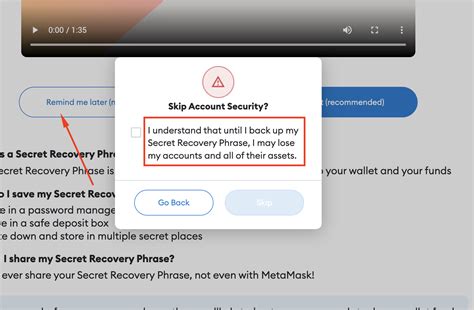Metamask: How to implement wallet connection with Ethers.js v6 for multiple providers (MetaMask, Coinbase)
Here is an article about the implementation of portfolio connections with Ethers.js V6 for various suppliers (Metamask, Coinbase):
Connecting the Metamask portfolio with Ether.js V6: a step by step guide
As a developer that builds a decentralized application (DAP), it is crucial to provide users to connect user connection options perfectly. In this article, we will explore how to implement portfolio connections using Ethers.js V6 for multiple suppliers, including metamask and coinbase.
What is Ether.js v6?
Ethers.js V6 is the latest version of the popular JavaScript library to interact with the Blockchain Ethereum. It provides a solid series of bees for account management, transactions and other blockchain activities. With V6, it is possible to explore advanced resources such as Web3.JS, Webassembly (Wasm) and best performance.
Why use ethorers.js v6?

Ethers.js V6 offers several advantages compared to previous versions:
- Improved Performance : Ethers.js V6 offers better performance using Webassembly (WASM) and optimizing functions.
- Improved Security : Etheter.JS V6 Includes robust safety features such as automatic return protection, which helps to avoid common attacks.
- The best support for the new Ethereum Functionality **: Ether.js.js V6 is designed to take advantage of the new Ethereum features, facilitating the development of DAPs that integrate with latest blockchain technology.
Implementation of portfolio connections with metamask and currency
To implement the portfolio connections using metamask and coinbase with Ethers.js v6, follow these steps:
Step 1: Install requested packages
First, it is necessary to install the requested packages. Run the following command in the project directory:
`Bash
NPM Install the É-UTILS @Ethersjs/Web3-Adaptors Eters
`
In addition, he installs@ethhersjs/wallet-provider-metamamaskand@ethhersjs/wallet-provider-coucil-coutinl to support metamask and currency respectively.
Passage 2: Initializing Eteter.js v6
Create a new JavaScript file (eg,metamaskwallet.js) and initializes Eters.js V6 using the following code:
JavaScript
IMPORTATION * as Eteries “Eteri”;
Import {WALLETPROVIDER} by ‘@ethhersjs/wallet-provider-metamask’;
Import {WALLETPROVIDARCOINGECKO} by ‘@ethhersjs/wallet-provider-coutin’;
Consta Provider = new Ethhers.providers.websocketPrier (
‘WSS: //mainnet.infura.io/v3/your_project_id’, // Replace with the Metamask or Mint Provider URL
{
Qualified: [‘metamask’, ‘coinbase’],
}
);
Consta MetamaskwalletPrier = New WalletProspider (
{Chainid: 1, networks: [1]},
supplier
);
Constt CoingeckowalletPrier = New WalletProvidarcoingecko ({
Provider: Supplier,
});
Export {
Metamaskwalletprovider,
COINGKOWALLETPRIER,
};
`
Replaceyour_project_idwith your real infinite project.
Step 3: USA ETHETER.JS V6 API to connect wallets
Now you can use the Eteter.js V6 API to connect the wallets. Here is an example:
JavaScript
Import {metamaskwalletprovider} of ‘./metamaskwallet’;
CONST ACTORDA = ACT Access MetamaskwalletPrier [0];
`
It is also possible to create a function that returns to the portfolio provider request for each supported supplier:
JavaScript
GettwalletProviders Function () {
return [
Metamaskwalletprovider,
COINGKOWALLETPRIER,
];
}
GettwalletPrier Standard Export;
`
Step 4: Connect the wallets to your DAP
Finally, connect your wallets to your application using theGetwalletPrivesters’ function and call the functions of the connected portfolio provider:
`JavaScript
Import {account} of ‘./metamaskwallet’;
CONST CONNECTTOMETASK = Async () => {
Abveat Account.Connect ();
};
ConnecttTometamask ();
``
Similarly, you can connect to coinbase and corncko portfolios using your respective suppliers.


